Which birds will we see in our NC backyards this winter + the best seeds to attract them
As temperatures drop, new birds are flocking to North Carolina to spend their winters in the region. Winter birds plus our year-round familiar favorites, like the vibrant Northern Cardinal and Blue Jay, have their favorite foods.
The News & Observer spoke with Carol Hamilton, president of the Triangle’s birding group New Hope Audubon Society, to learn how we can attract out favorite winter birds in North Carolina to our feeders, using their favorite feeds and seeds.
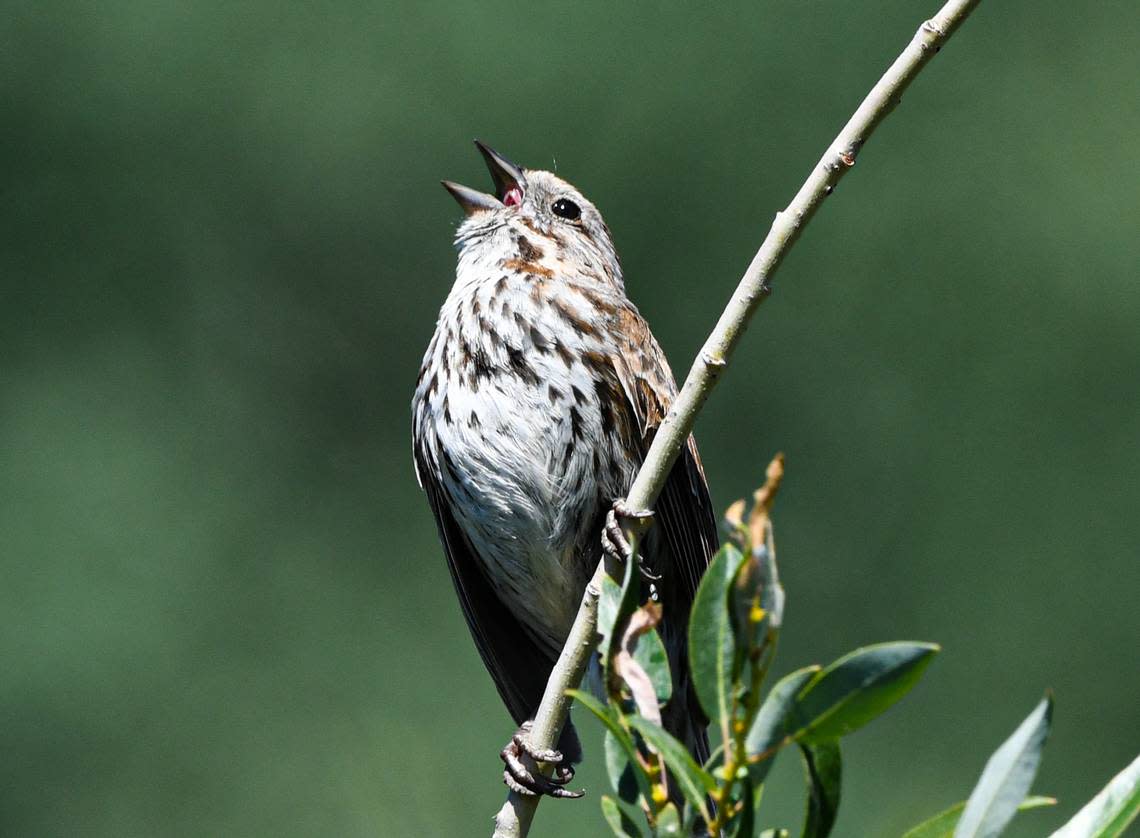
Which Raleigh birds like to visit your birdfeeder all year long?
Quite a few Triangle birds stay in our region from January through December. These 10 birds can be spotted this winter, whether they’re perched in leafless trees or snacking on seed at your birdfeeder:
• Northern Cardinal: North Carolina’s state bird is a striking red color with a tuft on top on its head and a black face, almost like it’s wearing a mask and has a thick beard. Males have that vibrant red hue, while females are more brown and with a bright orange beak. These are frequent feeder birds and sing songs of long whistles. Info: ebird.org/species/norcar.
• Eastern Bluebird: These birds are here and blue all year long, though their hue may look more muted in cool months. In the spring and summer, males’ blues get brighter when they’re looking to attract a mate. These birds often perch on wires or fence posts. Info: ebird.org/species/easblu.
• Tufted Titmouse: This bird is overall a blueish-gray with a white belly and orange sides. Feathers above its nose are black, and it has white cheeks. This bird whistles “peter peter peter” songs. Info: ebird.org/species/tuftit.
• Carolina Chickadee: This bird is small, plump and large-headed. It has a black cap, white cheeks and black throat. It’s often seen at feeders. This bird isn’t very shy, singing its name as “chickadee dee dee dee dee.” Info: ebird.org/species/carchi.
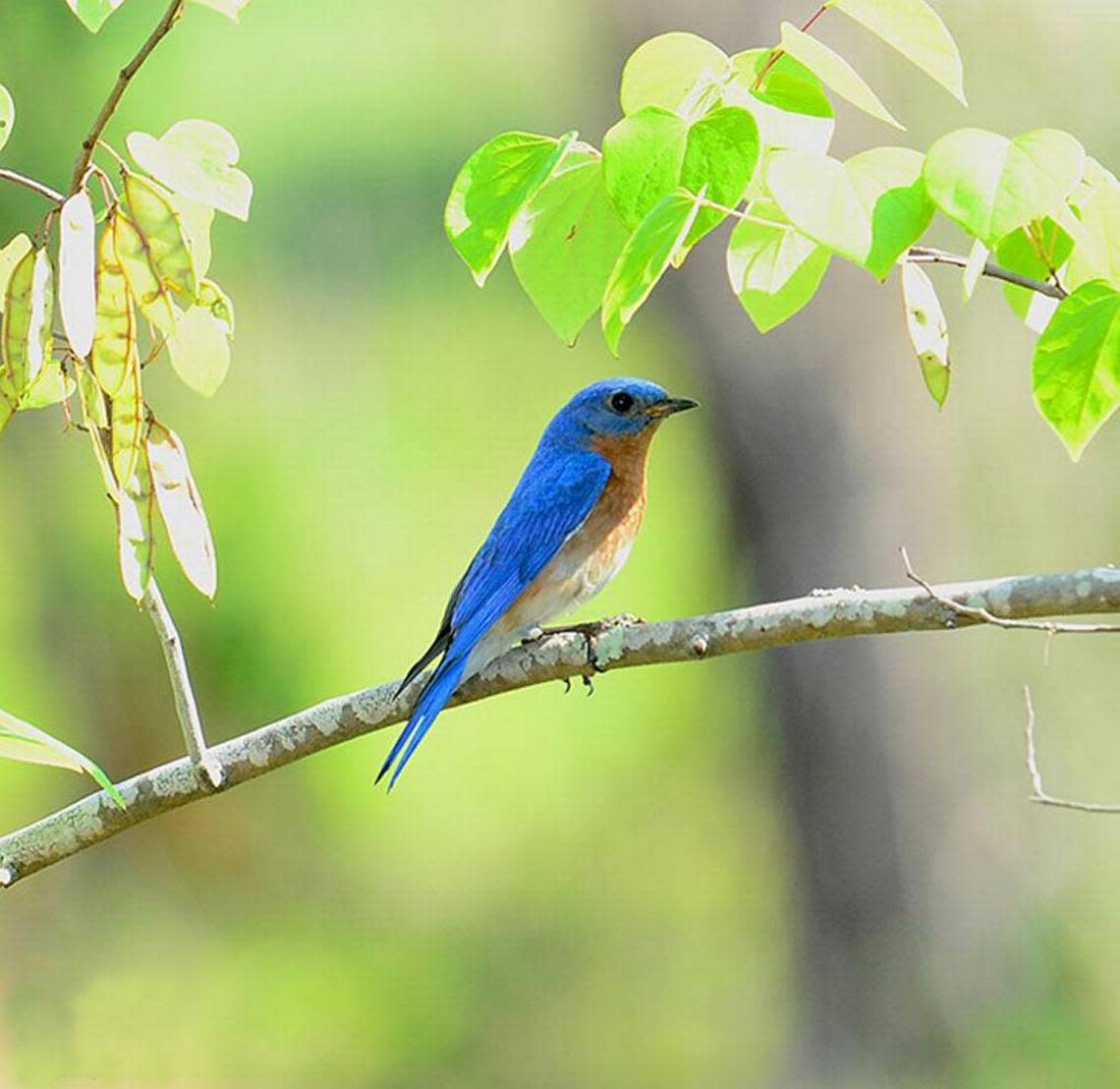
• Carolina Wren: This tiny bird has a huge voice, singing loudly all year. It has a warm brown color with orangey underparts and a striking white eyebrow. This bird will nest around backyards but in strange places, like inside a grill or a drainpipe. Info: ebird.org/species/carwre.
• House Finch: Males have an intensely red face and chest, while the rest of its feathers are brown striped. These birds often sing loudly in neighborhoods and at feeders. Info: Info: ebird.org/species/houfin.
• American Goldfinch: Males aren’t as brilliantly yellow in the winter as they are in warm-weather months, but they’re still around. They’re more drab and canvas-colored. These birds are often found in weedy areas, roadsides and backyards. Info: ebird.org/species/amegfi.
• Blue Jay: This vibrant blue bird has a tuft atop its head and black “necklace” around its throat. They frequently visit feeders, though they can get aggressive toward other birds. Listen for their harsh “jay” calls. Info: ebird.org/species/blujay.
• American Crow: Black all over and shrieking its familiar “caw,” these birds can often appear in flocks no matter the month. They’re common to see, even close to humans. Info: ebird.org/species/amecro.
• Mourning Dove: Adults can be svelte with long, pointed tails or large and spherical. They’re widespread across most of the country and love perching in suburbs and at bird feeders. They’re often seen in pairs or small flocks. Info: ebird.org/species/moudov.
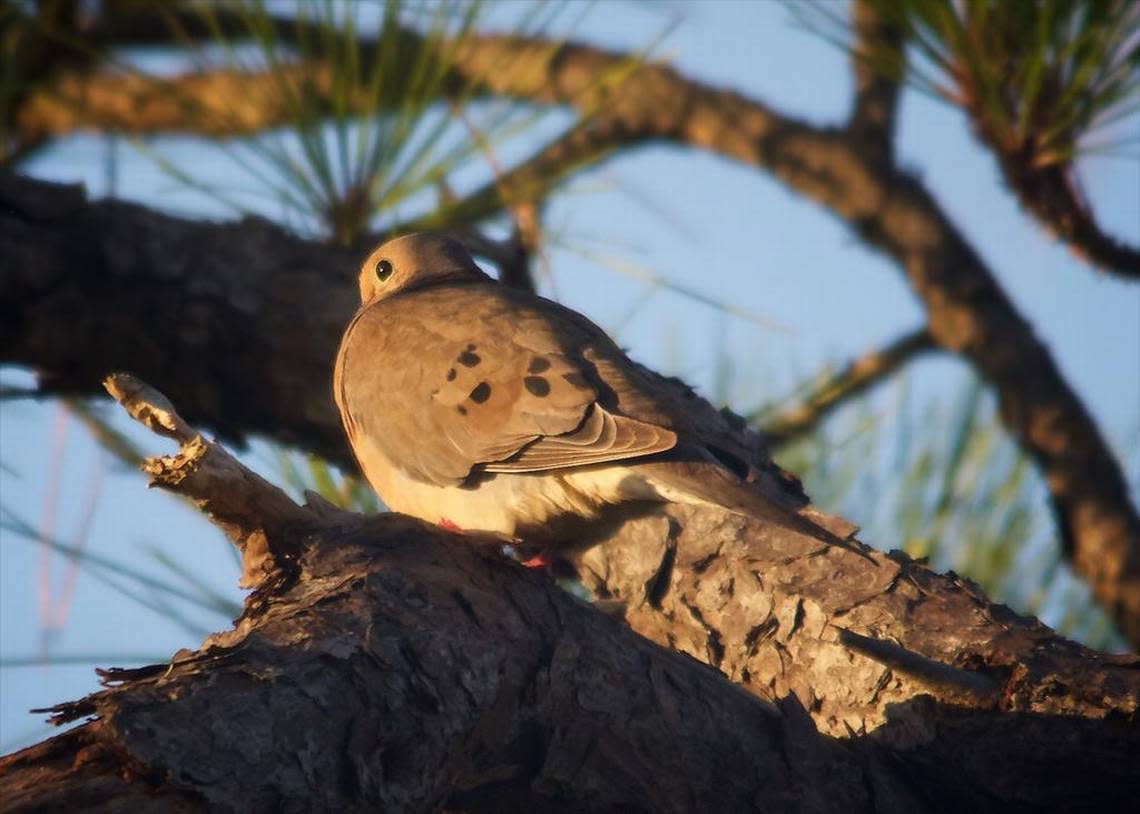
Which visitin birds are in Raleigh in the fall and winter?
You can spot these birds in our region in these cool-weather months:
• Dark-eyed Junco: This bird is usually in the NC mountains, but this time of year, it comes to our area and stays here all winter. This bird is also known as the Gray-headed Junco. Juncos are most likely to be spotted at the birdfeeder this fall and winter, Hamilton said. Info: ebird.org/species/daejun
“I like to say it’s got a little tuxedo on. It’s dark at the shoulders and head with a very white belly,” she said.
• Yellow-bellied Sapsucker: Adults have striking red heads and throats with white-looking bellies, despite the yellow in their name. They’re one of the many woodpeckers we have in NC, though sapsuckers are really only here in the winter, Hamilton said. Info: ebird.org/species/yebsap
• Song Sparrow: This small bird has thick brown stripes, plus a “mustache.” Listen for its “chimp” calls, as the bird is one of the most widespread sparrows in the country. Info: ebird.org/species/sonspa
• White-throated Sparrow: Its bold head pattern is white and black with bright yellow near its eyes. Its song is often described as “Old Sam Peabody” or “O Sweet Canada.” Info: ebird.org/species/whtspa
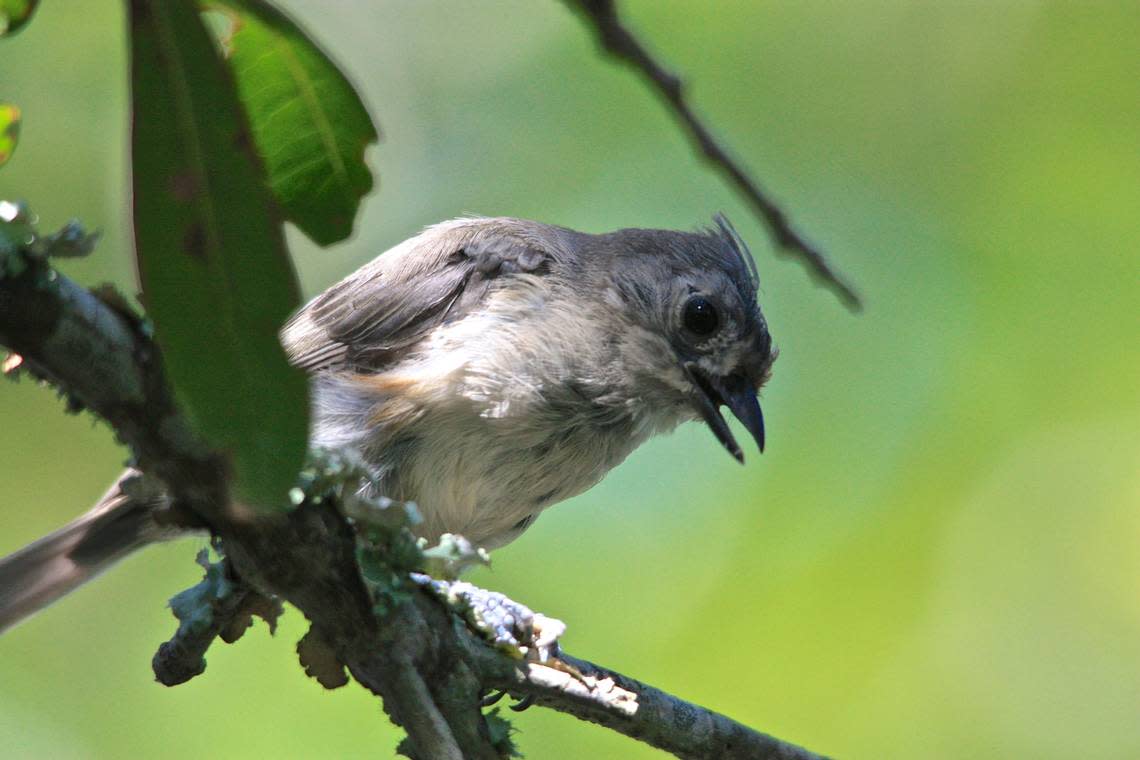
Will these birds come to my birdfeeder?
It depends on your backyard landscape and the type of feeder you have, Hamilton said.
Backyards with more native plants will be more successful at drawing birds in the region. And the right bird feeder makes a difference for seeing your favorites.
There are many types of birdfeeders, but we’ll focus on the platform and tube feeders.
Project FeederWatch, an initiative of The Cornell Bird Lab, is a great resource for learning about birdseed and feeder types for both amateur and longtime hobby birdwatchers, Hamilton said. Explore its rich learning materials yourself at feederwatch.org.
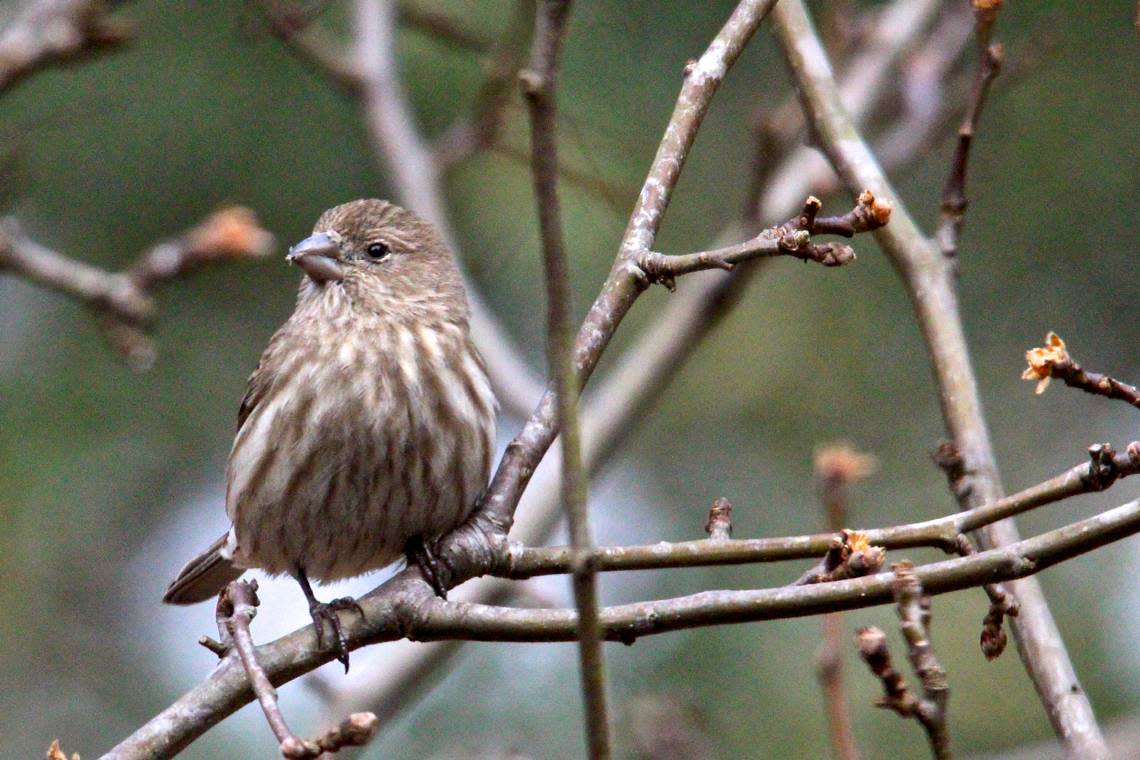
Tube feeders are hollow and typically made of plastic with numerous feeding ports and perches. They keep seed fairly dry, and their short perches accommodate small birds (but exclude larger ones). When filling with smaller seeds, use tube feeders with smaller feeding ports to avoid spillage.
These NC birds like to visit tube feeders:
Carolina Chickadee
Caroline Wren
Tufted Titmouse
House Finch
Blue Jays
American Crows
Platform feeders are flat and raised, and food is spread across them. They have many drainage holes to prevent water from flooding it. Platform feeders with roofs help keep the seed dry. When the feeder is closer to the ground, it can attract juncos, doves and sparrows.
These NC birds prefer platform feeders:
Northern Cardinals
Mourning Doves
Dark-eyed Juncos
Song Sparrow
(Source: feederwatch.org/learn/feeding-birds)
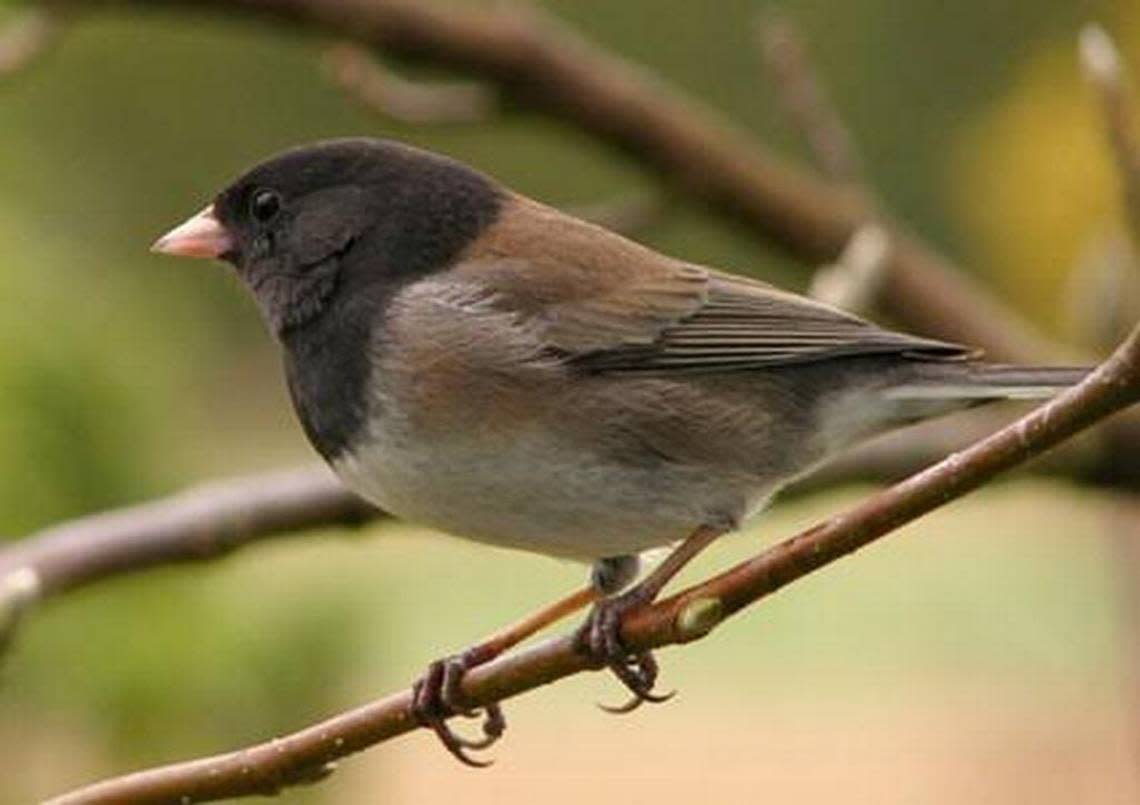
Which feed, birdseed should I buy to attract my favorite birds?
Sunflower seeds: This is a pretty good all-around seed that many birds love.
You can sometimes get bird seed mixed with millet, but lots of birds go fishing for the “good stuff” in there anyway,” Hamilton said.
Other birds will eventually come by and eat up every part of the mix, but sunflower seeds are definitely the chocolate candies in the raisin and peanut-mixed trail mix bag.
You can buy seeds that have been taken out of their husks already, as de-husking the seeds can leave your feeder area a bit messy. But these seed packs do cost a bit more.
If you want these birds, NC State Extension says, stock up on sunflower seeds:
Northern Cardinals
Blue Jays
Carolina Chickadees
Tufted Titmouses (or Titmice)
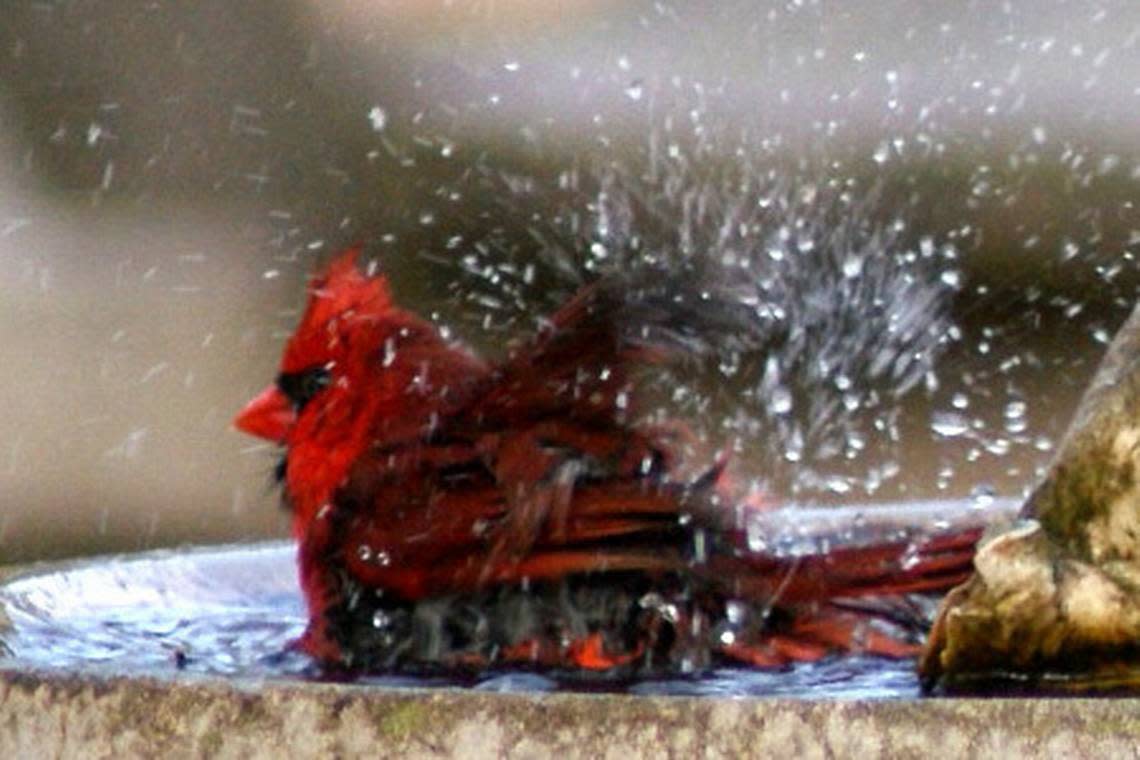
Suet: Most suet is beef kidney fat, which can come from a butcher’s meat counter or in a birdseed cake that also includes berries and various seeds. Because it’s a meat product, suet can become rotten if outside for too long in hot weather.
If you want these birds, add suet to your feeder:
Blue Jays
Tufted Titmouses
Carolina Chickadees
The same nearby birds are known to love both sunflower seeds and suet, so mixing up your birdseed – or even adding both to your feeder – might bring even more of these beautiful birds into your yard.
Niger seeds: These smaller seeds are better suited for small-beaked birds.
If you want these birds, stock up on niger seeds:
House Finches
Eastern Goldfinches
Dark-eyed Juncos
Mourning Doves
White-throated Sparrows
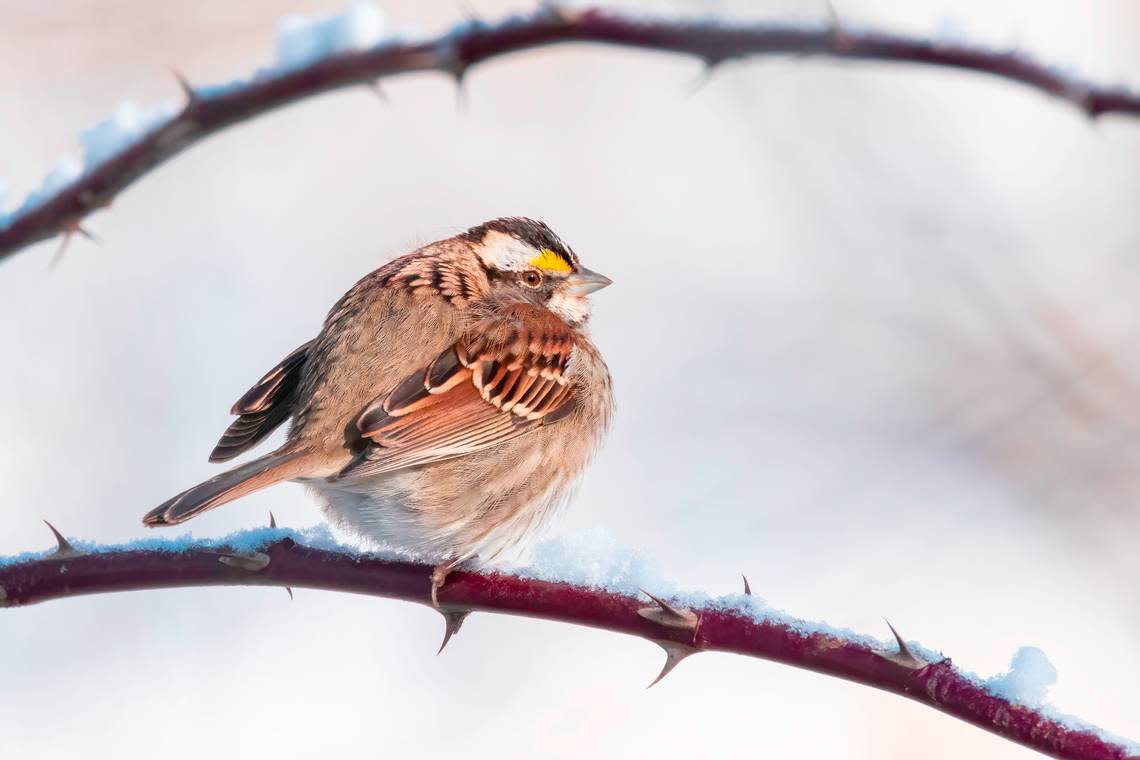
Where should I put my bird feeder in my backyard this winter?
Here’s what you should take into consideration when choosing your birdfeeder spot, NC State Extension teaches:
For you: For your own enjoyment, place your feeder near a viewing window.
Bird comfort: The best feeder sites are about 10 feet away from vegetative shelter, which can be large trees, shrubs or even buildings. Most birds don’t like to venture too far from their perches to come feed, so putting your feeder closer to the birds’ natural spot will make the birds more likely to visit.
Timing: Birds are most likely to feed at early morning and before sunset.
New Hope Audubon is an independent chapter of the National Audubon Society and serves Triangle towns and counties. The group holds regular outings and field trips across the Triangle. Get involved by visiting newhopeaudubon.org/get-outdoors.
Looking for remote work with a $100K+ salary? Work-from-home jobs in Wake hiring now
NC’s rattiest cities: Ranking of metros with the most rats includes North Carolina spots
